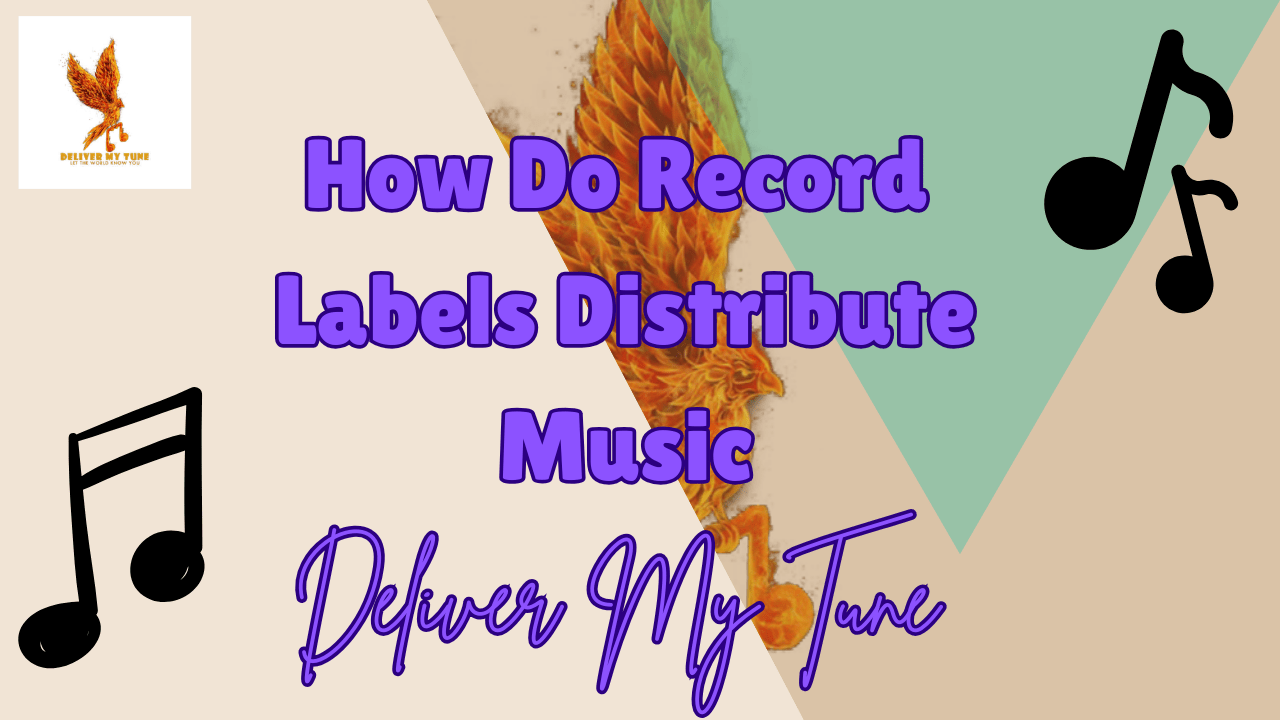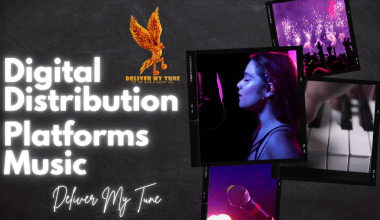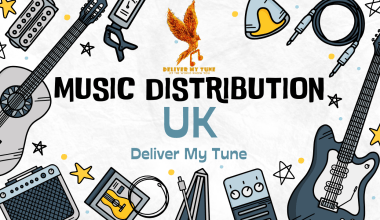Music distribution is the lifeline of the music industry. Whether you are a budding artist or a global superstar, your music must reach listeners efficiently. But how do record labels distribute music? In today’s world, this process involves a blend of traditional methods and digital innovation. From physical albums to Spotify streams, the landscape of music distribution has transformed.
This blog will dive into how record labels manage the intricate process of delivering music to audiences worldwide, ensuring a fair share of profits while maximizing reach.
What Does Music Distribution Mean?
At its core, music distribution is about making music accessible to the public. The process ensures that songs, albums, and compilations are available across all possible listening platforms, including:
- Physical Formats: Vinyl records, CDs, and cassettes.
- Digital Platforms: Streaming services like Spotify, YouTube Music, and Apple Music.
- Social Media Channels: TikTok, Instagram, and more for snippets or promotional content.
Distribution enables artists to connect with their audience while generating revenue through royalties, sales, and streaming.
The Evolution of Music Distribution
a. Traditional Music Distribution
Decades ago, record labels played a central role in distributing music. The process was manual and heavily reliant on physical sales. Record labels managed:
- Manufacturing: Printing and producing physical albums.
- Wholesale Partnerships: Collaborating with retailers and distributors.
- Radio Promotion: Securing airtime for singles and albums.
For instance, major labels like Sony Music or Universal Music partnered with local retailers to ensure albums were stocked and promoted.
b. Digital Revolution: The Game Changer
The introduction of digital platforms in the early 2000s marked a major shift. Digital files replaced physical formats, offering instant access to music. Key milestones include:
- The launch of iTunes in 2001, which allowed users to purchase single tracks.
- The rise of streaming services like Spotify and YouTube in the 2010s.
- Social media platforms integrating music for viral trends, such as TikTok challenges.
Digital distribution now accounts for over 60% of the global music market, enabling artists to reach global audiences without the need for physical inventory.
The Role of Record Labels in Music Distribution
Record labels are at the heart of music distribution. They handle multiple responsibilities, ensuring a seamless connection between artists and their fans.
a. Licensing
Record labels secure the necessary permissions for music to be sold, streamed, or used in media like films or advertisements. Licensing protects intellectual property rights while ensuring artists are compensated.
b. Marketing and Promotion
Distribution isn’t just about availability; it’s also about visibility. Record labels craft marketing campaigns to promote albums and singles. This includes:
- Playlist pitching to streaming services like Spotify.
- Social media campaigns to engage younger audiences.
- Partnerships with influencers to amplify reach.
c. Analytics and Reporting
Modern distribution relies heavily on data. Record labels analyze:
- Streaming trends: Which songs are performing well on platforms like Spotify.
- Audience demographics: Age, location, and listening habits.
- Revenue performance: Ensuring proper royalty distribution.
Labels use platforms such as Spotify for Artists or YouTube Analytics to gauge the success of their distribution strategies.
Digital Music Distribution Channels
The digital age has introduced a plethora of distribution channels, making it easier than ever to connect with listeners globally.
a. Streaming Platforms
Spotify, Apple Music, and Amazon Music are leading streaming platforms that dominate digital distribution. Record labels use these platforms to:
- Submit music for playlist consideration.
- Track performance metrics, such as streams and saves.
- Generate revenue through subscription models.
Social media platforms are now an integral part of music distribution. Songs that go viral on TikTok or Instagram often translate into millions of streams. Examples include:
- Creating short, engaging Reels on Instagram.
- TikTok trends that feature snippets of songs.
- YouTube Shorts for teaser promotions.
c. Direct-to-Fan Platforms
Websites like Bandcamp allow artists to sell music directly to fans, providing higher royalty percentages than streaming services. Independent artists often use these platforms to maintain full control over their music distribution.
Physical Distribution in the Digital Era
Despite the dominance of digital platforms, physical formats still hold value. Vinyl records have witnessed a resurgence among collectors, and CDs remain popular in markets like Japan.
a. Vinyl Comeback
Vinyl sales have surged in recent years, driven by nostalgia and superior audio quality. Many record labels now include vinyl production as part of their distribution strategy.
b. CDs in Niche Markets
While less popular globally, CDs are still a preferred format in specific regions. Labels often release special editions with bonus tracks or artwork to attract collectors.
Independent Music Distribution
In recent years, independent artists have bypassed traditional record labels using affordable distribution platforms like:
- TuneCore
- DistroKid
- Deliver My Tune
These platforms empower artists to retain creative control while reaching global audiences. Key benefits include:
- Affordable pricing plans: Distribute singles and albums for a flat fee.
- Higher royalty rates: Artists receive direct payments without middlemen.
- User-friendly tools: Dashboard analytics to track performance.
How Record Labels Manage Royalties
Royalties are a critical component of music distribution, ensuring artists and stakeholders are compensated fairly.
a. Types of Royalties
- Mechanical Royalties: Earned from album sales or streams.
- Performance Royalties: Collected for live performances and radio airplay.
- Sync Royalties: Paid when music is used in films, TV shows, or ads.
b. Revenue Sharing
Artists typically receive a percentage of profits based on their contract terms. For example, independent labels may offer artists 70% of revenue, while major labels often retain a higher share due to their marketing investments.
Challenges in Music Distribution
a. Piracy
Digital piracy remains a challenge for the industry, with illegal downloads and streams cutting into revenue.
b. Algorithm Bias
Streaming platforms rely on algorithms to recommend songs. If an artist doesn’t generate sufficient initial streams, their visibility can suffer.
c. Oversaturation
With thousands of songs uploaded daily, standing out has become more challenging than ever.
Future Trends in Music Distribution
a. AI and Automation
Artificial intelligence is enhancing playlist curation, audience targeting, and personalized recommendations. AI-driven platforms also help labels identify emerging trends and promising artists.
b. Blockchain and NFTs
Blockchain technology promises transparent royalty payments, while NFTs allow artists to monetize exclusive content, such as unreleased songs or artwork.
c. Augmented Reality (AR) Experiences
Labels are experimenting with AR for immersive listening experiences, such as virtual concerts or album previews.
How Artists Can Optimize Their Distribution
To maximize their reach, artists should:
- Leverage Social Media
Post regularly on Instagram, TikTok, and YouTube to keep fans engaged. - Collaborate with Playlists
Reach out to curators to feature their songs on popular playlists. - Analyze Metrics
Use tools like Spotify for Artists to track streams, saves, and audience demographics. - Release Strategically
Plan releases around major holidays or cultural events to maximize visibility.
Conclusion: A Symphony of Strategy
Understanding how record labels distribute music is essential for navigating the modern music industry. By combining traditional expertise with cutting-edge technology, labels ensure that artists can reach audiences across the globe. Whether through vinyl records or viral TikTok trends, the goal remains the same: connecting music with fans.
As technology continues to evolve, the future of music distribution promises even more exciting possibilities for artists and listeners alike.
Related Articles:
For further reading, explore these related articles:
- Top 10 Music Artists You Must Follow in 2024
- How to Plan Your Career in the Music Industry
- How is Music Distribution Different from Music Publishing?
For additional resources on music marketing and distribution, visit Deliver My Tune.






